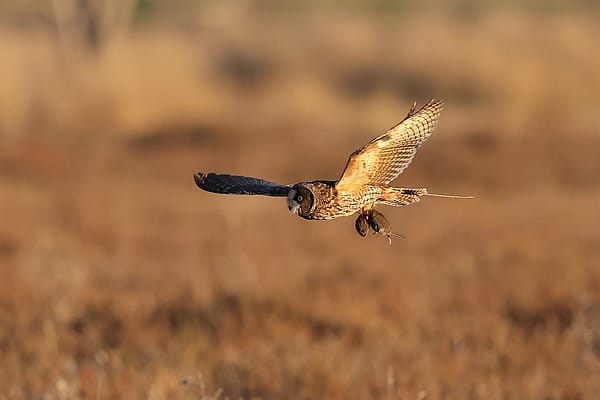
How Do Birds Sleep?

When I was a young girl I didn’t think much about how birds sleep. I just assumed they went to their nest each night and slept like we do. It is true that birds, like mammals, experience both non-rapid eye movement sleep and rapid eye movement sleep, although both cycles are shorter in birds than in humans. I was wrong about the nests, though. Not all birds build nests, but those that do, build them only for the purpose of incubating their eggs and raising chicks – not for using as a comfy bed each night.
What else could there be to how birds sleep? Turns out, quite a bit . . .
Birds, depending on their species, may sleep standing up, lying down, floating on the water, and even upside down. (Listen to Bird Note: “Hanging Parrots” http://birdnote.org/show/hanging-parrots ) While asleep, some species of waterfowl can even sense the vibration in the water caused by predators swimming towards them.

While sleeping, birds will often fluff up their feathers to better cover their body, keeping the body temperature high. If in a standing position, a bird may turn its head around, tuck its beak into its back feathers, and pull one leg up to its belly before falling asleep. Tucking these bare parts under the feathers will give the bird added protection against cold temperatures.

Some birds, such as hummingbirds, can go into a controlled condition called “nocturnal torpor.” This activity lowers the bird’s body temperature and places it ;in an energy conservation state helping them save energy yet stay warm enough to survive. Other bird species may gather into large flocks in order to share body heat as they sleep.
Small songbirds must keep off the ground to better protect themselves from ground predators but they also need to keep hidden from nocturnal predators such as owls. These birds will often find brush and foliage to use as cover while sleeping.

Birds that sleep while perched have tendons in their legs that involuntarily cause the feet to clasp a perch while the bird is in a squatting position. These tendons will keep the feet tightly gripping the perch until the bird awakens and straightens its legs.

For me, the most interesting fact about birds and sleeping is that some birds can sleep with half of their brain awake while the other half sleeps. This is called unihemispheric slow-wave sleep (USWS) and helps to keep birds alert to potential predators while sleeping. There are some other animals that can also sleep this way but it is believed that birds are the only ones that have the ability to control it. They can adjust how much of their brain is asleep by how wide they open or close their eyes. Ducks and other waterfowl are known to be good at this but other birds, such as peregrine falcons, can do this as well. Niles Rattenborg, who took part in the research that made this discovery, has reported that ducks were able to make behavioral decisions about whether to keep one half of the brain awake or allow both halves to sleep. He lined up four groups of four mallards and videotaped them as they slept. He found that the ducks on the ends of the rows used USWS 2-½ times more than the birds in the middle. In this way the outer ducks are alert enough to quickly react to danger while still being able to rest.

Opening photo of Seagull by Alex.m.Hayward, Attribution License https://www.flickr.com/photos/75967467@N02/
Photo of Sleeping Swan by Stephengg, Attribution License https://www.flickr.com/photos/stephengg/
Mallards Sleeping by Jeffrey Peeden, Attribution License https://www.flickr.com/photos/jeffreypeeden/
Photo of the Eurasian Siskin by Jarko_ , Noncommercial-Attribution License https://www.flickr.com/photos/jarko_/
Sleeping Barred owl by ebjazztgeej, Attribution License https://www.flickr.com/photos/zenjazzygeek/
Mallards in a Row by Whitney H, Noncommercial-Attribution License https://www.flickr.com/photos/backyardbirderwa/
Written By
Anne Hay
Anne Hay has a Bachelor's degree in Elementary Education and a Master's in Computers in Education. She spent most of her working years teaching third grade at Livingston School in Cody, Wyoming. After retiring she began doing a variety of volunteer work for the Buffalo Bill Center of the West’s Draper Natural History Museum. Anne loves nature and has a concern for the environment. She believes that educating the public, so that they will have a better understanding and appreciation for the natural world, is very important. Because of this belief, volunteering at the Center is a perfect fit. She spends time in the Draper Lab, observing eagle nests for Dr. Charles Preston’s long-term research project on nesting golden eagles, writing observation reports of raptor sightings in the Bighorn Basin, and working with the Draper Museum Raptor Experience. Anne states that, “Having a bird on my glove, is one of my all time favorite things in life.”











